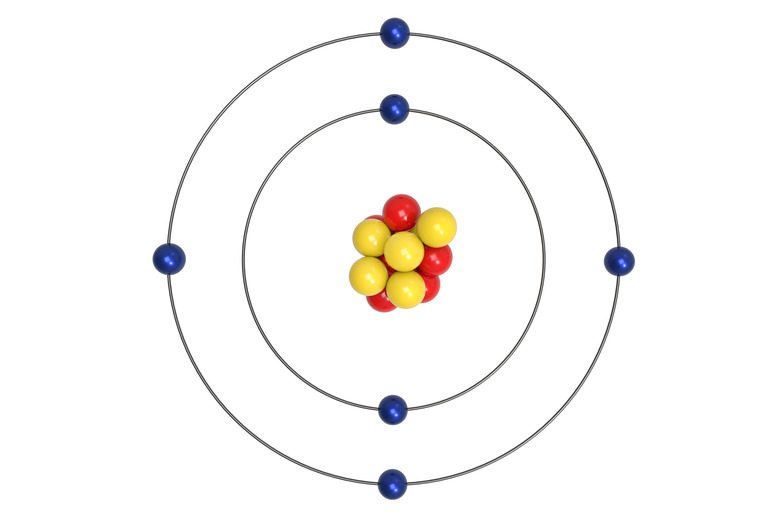How To Calculate Isotopes
The number of protons in an atom determine what element it is, but atoms can have different numbers of neutrons to give it a different mass. When two atoms of the same element have different numbers of neutrons, they are called isotopes. Some isotopes occur naturally, and it is possible to calculate the percent abundance of two isotopes in nature if atomic masses and the element's average atomic mass are already known.
Step 1
Determine the atomic masses of the isotopes, as well as the element's average atomic mass. The units of these values will be in amu, which stands for "atomic mass unit." One amu is approximately the mass of one proton. For example, boron has two naturally occurring isotopes: B-10 with a mass of 10.013 amu and B-11 with a mass of 11.009 amu. The average atomic mass of boron, according to the periodic table, is 10.811 amu.
Step 2
Enter the values into the following formula: a = b (x) + c (1 – x). In the equation, "a" is the average atomic mass, "b" is the atomic mass of one isotope, "c" is the atomic mass of the other isotope, and "x" is the abundance of the first isotope. For example, 10.811 = 10.013 (x) + 11.009 (1 – x)
Step 3
Factor the equation. For example, 10.811 = 10.013x + 11.009 – 11.009x
Step 4
Add the negative x factor to both sides of the equation. For example, 10.811 + 11.009x = 10.013x + 11.009 – 11.009x + 11.009x, which reduces to 10.811 + 11.009x = 10.013x + 11.009
Step 5
Subtract the non-x factor from both sides of the equation. For example, 10.811 + 11.009x – 10.811 = 10.013x + 11.009 – 10.811, which reduces to 11.009x = 10.013x – 0.198
Step 6
Subtract 10.013x from both sides of the equation. For example, 11.009x – 10.013x = 10.013x – 0.198 – 10.013x, which reduces to 0.996x = 0.198
Step 7
Divide both sides by the coefficient of the x factor. For example, 0.996x/0.996 = 0.198/0.996, which reduces to x = 0.1988. This is the abundance of B-10.
Step 8
Multiply your answer by 100 to get a percentage. For example, 0.1988 x 100 = 19.88 percent.
Step 9
Subtract this value from 100 percent to find the abundance of the other isotope. For example, 100 – 19.88 = 80.12 percent. This is the percent abundance of B-11.
Things Needed
- Pencil
- Paper
- Calculator
TL;DR (Too Long; Didn't Read)
This formula only works for two unknown percentages. For elements with three or more isotopes, this formula can only be used if all but two of the percent abundances are already known.
Cite This Article
MLA
Carr, Kevin. "How To Calculate Isotopes" sciencing.com, https://www.sciencing.com/calculate-isotopes-8500694/. 13 March 2018.
APA
Carr, Kevin. (2018, March 13). How To Calculate Isotopes. sciencing.com. Retrieved from https://www.sciencing.com/calculate-isotopes-8500694/
Chicago
Carr, Kevin. How To Calculate Isotopes last modified March 24, 2022. https://www.sciencing.com/calculate-isotopes-8500694/
